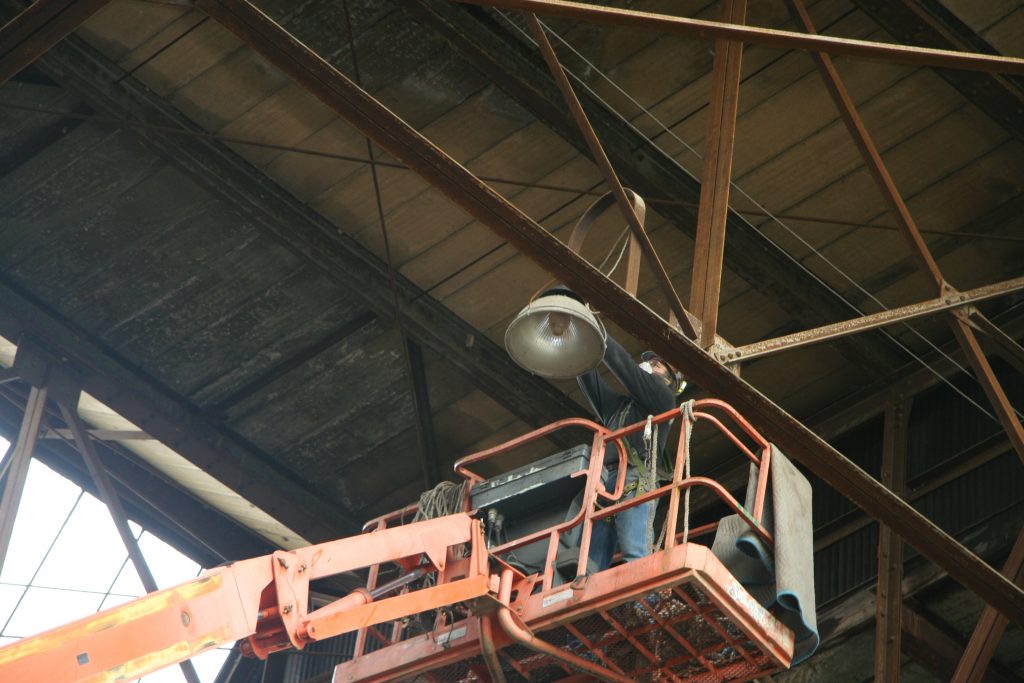Vintage industrial light fixtures are a sleek lighting accessory for any contemporary home or office. Durable Holophane lighting, in particular, carries with it a powerful history of scientific innovation and industrial applications. “Holophane” comes from the Greek words Holos and Phainein, translated “to appear completely luminous”.
The Holophane Glass story begins in the 1890s when French electric scientist Andre Blondel and Greek engineer Spiridion Psaroudaki covered a glass globe in the laboratory with horizontal prisms positioned to manipulate light. They were awarded a U.S. patent in 1893, when Holophane fixtures were already being manufactured in France and exported across Europe and the U.S.
Otis A. Mygatt acquired the rights for the illumination technology in 1896 and founded the Holophane Company in London. Holophane Glass Company was incorporated in America in 1898, with its first headquarters on Broadway in New York.
Huge strides were made in illumination technology during the Progressive Era of the early 1900s. Holophane Glass Company employed specialized engineers to study the distribution of light. The result was an innovative line of globes and reflectors made of clear crystal glass with prisms constructed to direct rays of light both downward and outward. When General Electric partnered with Holophane in 1911, they combined the classic products with a frosted line of Fostoria glassware.
The company began providing “scientific illumination” to industrial facilities. During the 1920s, Holophane Glass developed “hibay” lighting for the economical illumination of large factories, including the Chevrolet Motor Co. stockroom in Tarrytown, NY, and Westinghouse Electric and Manufacturing in East Pittsburgh.
Holophane’s influence continued through 1930s, lighting industrial areas and famous spots like Radio City Studios, NY, The House of Lords in England, and Westminster Abbey during the coronation of King George VI. During WWII, Holophane lit war plants and airplane hangars around the world. By 1945, Holophane lighting had penetrated into the Senate, the House of Representatives, and the Library of Congress.
Holophane Glass Company coined the term “illumineering” based on the visual and physiological needs of the human eye, a concept that is still pervasive in lighting technology. Through the present day, Holophane continues to research and develop street lighting, fluorescent commercial lighting, contemporary outdoor illumination, and lighting for emergency applications.
Vintage Holophane light fixtures are very popular in upscale auction houses and industrial reclamation circles. The trademark of these “luminaires” is a borosilicate glass refractor or reflector. The prisms direct light both up and down, which is perfect for illuminating a space without glare or dark spots.
Olde Good Things has acquired many of these lights over the years and many commercial and retail customers have purchased these reclaimed lights and put them to use in new applications. Here you see one customer
Olde Good Things was fortunate to retrieve a collection of Holophane pendant lighting from a century-old plant in New Jersey. These industrial beauties range in size from 15” to 21” in diameter.
Visit Olde Good Things to discover more architectural treasures.
Inquire about other sizes available at [email protected]. 888-233-9678.
Credits:
http://www.holophane.com/company/history/index.asp
https://www.justcollecting.com/miscellania/antique-holophane-lighting







